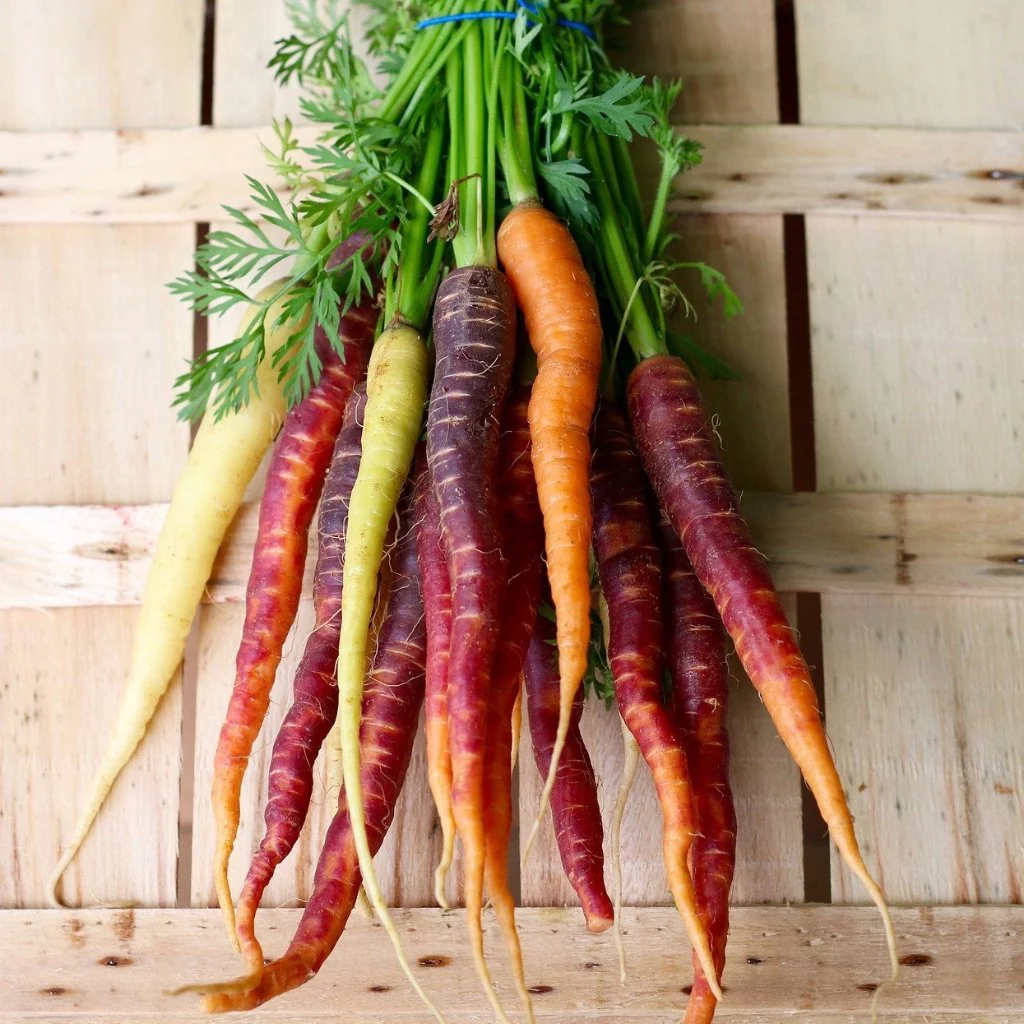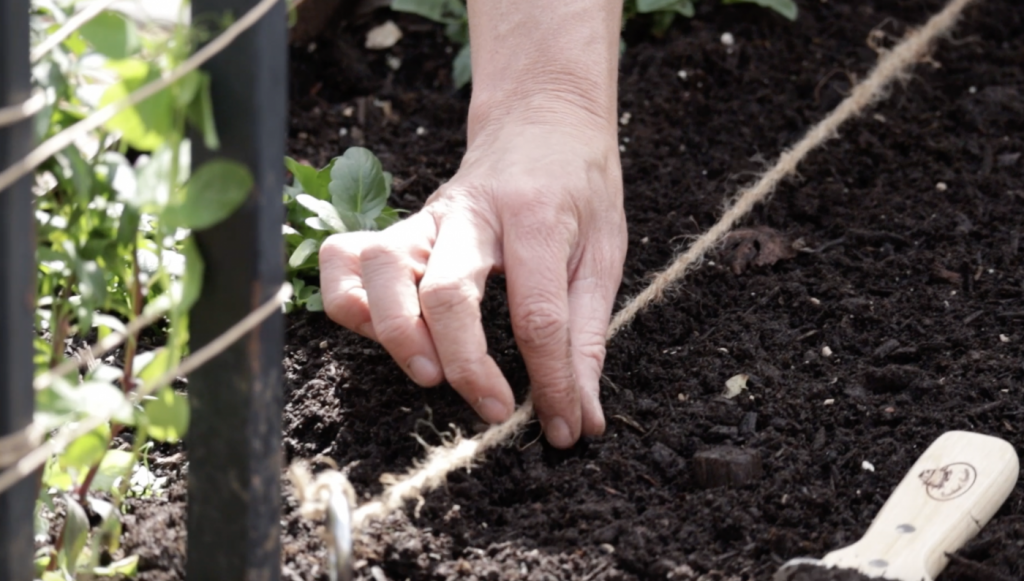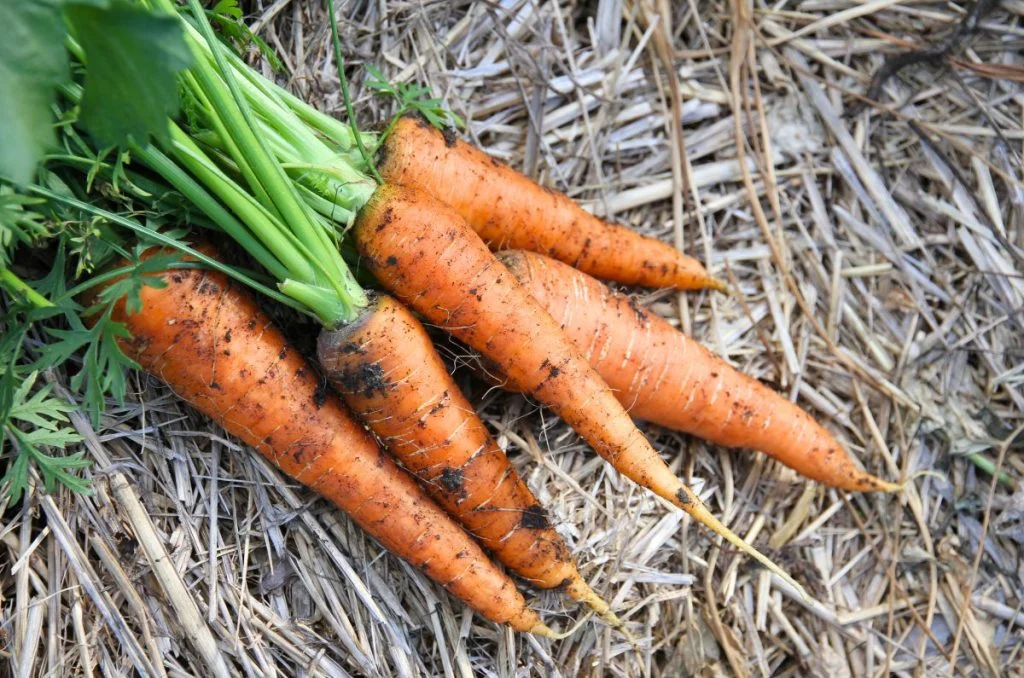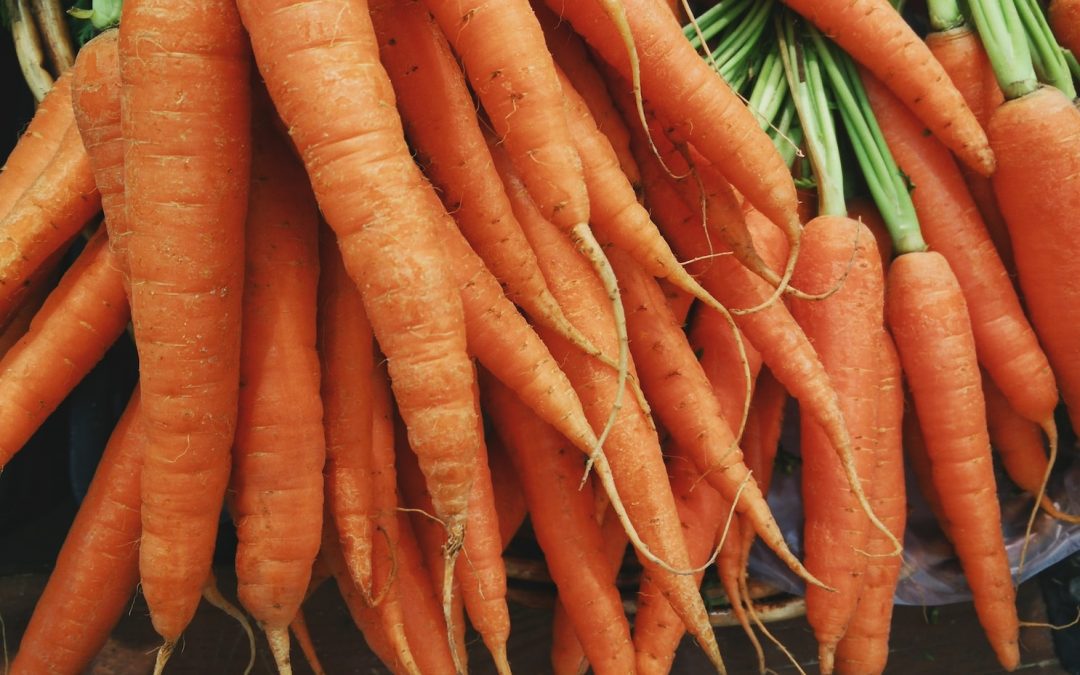Home-grown carrots taste miles better than the bagged ones from the shop. They’re sweeter, crispier, and you can pull them straight from the soil when you’re ready to eat. The good news? Learning how to grow carrots is very beginner-friendly once you get the soil, sowing, and watering right.
If you’d like help building a rich, well-structured bed that suits carrots and other veg, our Indoor Vegetable Garden Soil: The Complete Beginner’s Guide is a great companion to this article.
Contents
- 0.1 Choosing the Right Carrot Varieties
- 0.2 Preparing Soil for Carrots
- 0.3 How to Sow Carrot Seeds
- 0.4 Watering and Thinning Carrot Seedlings
- 0.5 Feeding, Weeding and General Care
- 0.6 Protecting Carrots from Pests and Problems
- 0.7 Harvesting and Storing Carrots
- 0.8 FAQs About How to Grow Carrots
- 0.9 Final Thoughts on How to Grow Carrots
- 0.10 Related Articles
- 1 Learn Simple Composting Techniques for Your Vegetable Garden
Choosing the Right Carrot Varieties
A big part of learning how to grow carrots successfully is choosing types that match your soil and space. Not every carrot needs a deep, perfect bed.
Long types (like Imperator/Nantes) do best in deep, loose soil with no big stones.
Short or stump-rooted types (like Chantenay) cope better with shallower beds and slightly heavier ground.
Mini or ball-type carrots are ideal for containers and raised beds.
If your soil is stony or heavy clay, short or mini varieties are much easier than trying to force long roots through poor ground. For containers, go for compact types that are bred for pots and boxes, and make sure the container is at least 25–30 cm deep.

Preparing Soil for Carrots
Carrots hate compacted, lumpy, or freshly-manured soil. To grow carrots that are straight and smooth, focus on building a deep, loose, stone-free bed.
Dig or fork the soil to a spade’s depth to break up compaction.
Remove stones, large clods, and old roots.
Mix in garden compost or well-rotted organic matter the year before, rather than right before sowing.
Avoid fresh manure or very rich, heavy feeds – these can cause forking and lots of small side roots.
Aim for soil that feels crumbly and friable in your hand. If you squeeze it into a ball and it stays rock-solid, it’s still too heavy.
A narrow stainless steel hand trowel with depth markings makes it much easier to create neat seed rows at the right depth for carrot sowing.
For more detail on ideal soil texture, drainage, and preparation for root crops, you can follow trusted advice from organisations like the Royal Horticultural Society, which explain how to get the best results from carrots and other root vegetables.
How to Sow Carrot Seeds
Once the bed is prepared, the next step in how to grow carrots is simple, careful sowing. Carrots don’t like being transplanted, so they’re usually sown directly where they’ll grow.
- Rake the soil surface until it’s level and fine.
- Use a cane or the edge of your hand trowel to make shallow drills about 1 cm deep.
- Space drills around 15–20 cm apart.
- Sow seeds thinly along each row – they’re tiny, so don’t worry if it’s not perfect.
- Gently cover the seeds with soil and water with a fine rose so you don’t wash them away.
In cooler climates, you can start early sowings under cloches, a fleece tunnel, or in deep containers in a sheltered spot to give them a bit of protection while the weather is still changeable.

Watering and Thinning Carrot Seedlings
Carrot seeds can take a couple of weeks to appear, so don’t panic if you don’t see anything straight away. While they’re germinating, the key is steady moisture.
Keep the top few centimetres of soil slightly damp, not soaked.
Use a watering can with a fine rose or a gentle spray setting so you don’t disturb the seeds.
Once seedlings appear, water less often but more deeply to encourage roots to chase moisture downwards.
Thinning is where many people struggle when they’re learning how to grow carrots, but it’s essential for decent-sized roots.
When seedlings are a few centimetres tall, thin them to 2–3 cm apart.
Once roots start to swell, thin again (if needed) to 5–8 cm apart, depending on variety.
Water lightly after thinning to help the remaining plants settle.
Try to thin on a cool, still evening rather than a windy, sunny day – this helps reduce the smell of crushed foliage, which can attract carrot fly.
Feeding, Weeding and General Care
Carrots don’t need heavy feeding if the soil was prepared with compost beforehand. In fact, overfeeding with high-nitrogen fertilisers can lead to big tops and small, disappointing roots.
Keep the bed weed-free, especially early on. Weeds compete for light and nutrients and can easily swamp small seedlings.
Hand-weed or use a small hoe carefully between rows, avoiding the shallow carrot roots.
If growth seems slow and foliage pale, a very light application of a balanced granular fertiliser can help – but go easy.
Mulching lightly between rows with fine compost or straw can help keep moisture regular and reduce surface crusting in hot weather, which makes it easier for roots to push down.
Protecting Carrots from Pests and Problems
The main pest to watch for when you grow carrots is carrot fly. The larvae tunnel into the roots, leaving rust-brown marks and making carrots unappetising.
To reduce carrot fly damage:
Avoid bruising or crushing foliage when thinning.
Thin in the evening and cover rows afterwards.
Grow carrots in raised beds or containers higher than knee height if possible – it can help reduce fly attack.
Use fine insect mesh or fleece over hoops to physically block the adult flies from laying eggs.
A lightweight garden fleece tunnel sized for vegetable beds is a simple, reusable way to protect carrot rows and other root crops at the same time.
Other common issues:
Forked or split roots – often caused by stones, fresh manure, or sudden changes in watering.
Very small roots – usually from overcrowding, poor soil, or lack of moisture during swelling.
Green shoulders – when the top of the root is exposed to light; just mound a little soil over the crowns.
Harvesting and Storing Carrots
Harvesting is the best part of learning how to grow carrots. You can pull roots as soon as they reach a usable size, or leave them to bulk up for bigger harvests.
Start checking by gently scraping soil away from the shoulders to see how wide the root has become.
Loosen the soil with a fork a short distance away if it’s heavy, then pull carrots by the tops.
Take a mix of sizes – small “baby” carrots are delicious and help thin crowded patches.
Storing options:
In light soils, you can leave some carrots in the ground and lift as needed, covering with fleece or mulch in cold weather.
For longer storage, lift healthy roots, cut foliage down to a couple of centimetres, and store them in boxes of slightly damp sand in a cool, dark place.
Smaller quantities can simply go in the fridge in breathable bags.

FAQs About How to Grow Carrots
1. How long do carrots take to grow from seed to harvest?
Most carrot varieties take around 10–16 weeks from sowing to harvest, depending on variety and conditions. Baby carrots are ready sooner; maincrop types may take longer to bulk up.
2. Can I grow carrots in containers?
Yes. Choose a deep pot (at least 25–30 cm), use loose, stone-free compost, and pick shorter or mini carrot varieties. Water regularly and thin seedlings just as you would in a bed.
3. Why are my carrots small and spindly?
Common causes include overcrowding (not thinning enough), poor or compacted soil, lack of water while roots are swelling, or too much shade. Improving soil structure and spacing usually helps next time.
4. Do carrots need full sun?
Carrots prefer full sun, but they can tolerate a little light shade, especially in hotter climates. In very shady spots, roots may be small and foliage weak.
5. Can I grow carrots indoors?
You can grow carrots in deep containers on a very bright windowsill, balcony, or under strong grow lights. Focus on mini or short-rooted varieties, and keep the compost consistently moist.
Final Thoughts on How to Grow Carrots
Once you understand how to grow carrots step by step – preparing loose soil, sowing thinly, watering steadily, thinning bravely, and protecting against carrot fly – it all becomes a repeatable routine. Each season you’ll learn a little more about your soil, your climate, and the varieties that perform best in your garden.
Start with one or two rows, keep notes on what worked and what didn’t, and don’t be discouraged by the odd forked root or nibbled carrot. With each sowing, your beds will improve, your timing will sharpen, and your harvests will get sweeter and more satisfying.
Related Articles
BUILD HEALTHIER BEDS FOR BIGGER HARVESTS
Learn Simple Composting Techniques for Your Vegetable Garden
Now that you know how to grow carrots, the next step is feeding your soil so future crops are even stronger. Our Composting Techniques – A Green Approach to Waste Management guide shows you how to turn kitchen scraps and garden waste into rich, free compost that boosts root growth and improves soil structure for carrots and other veg.

